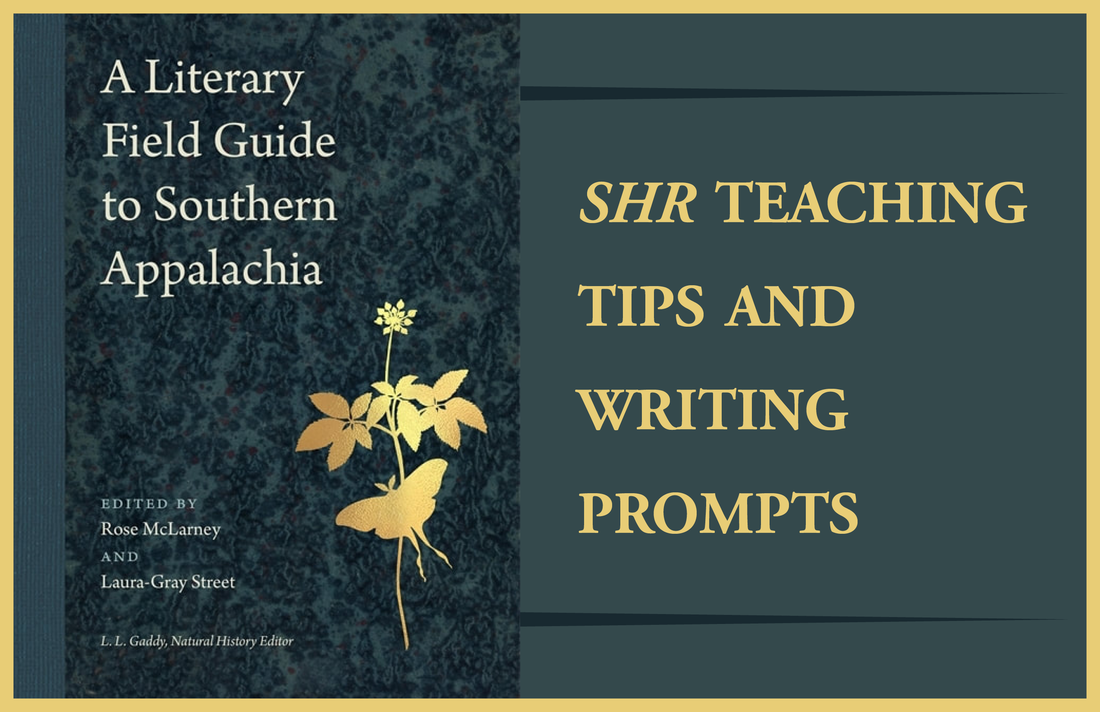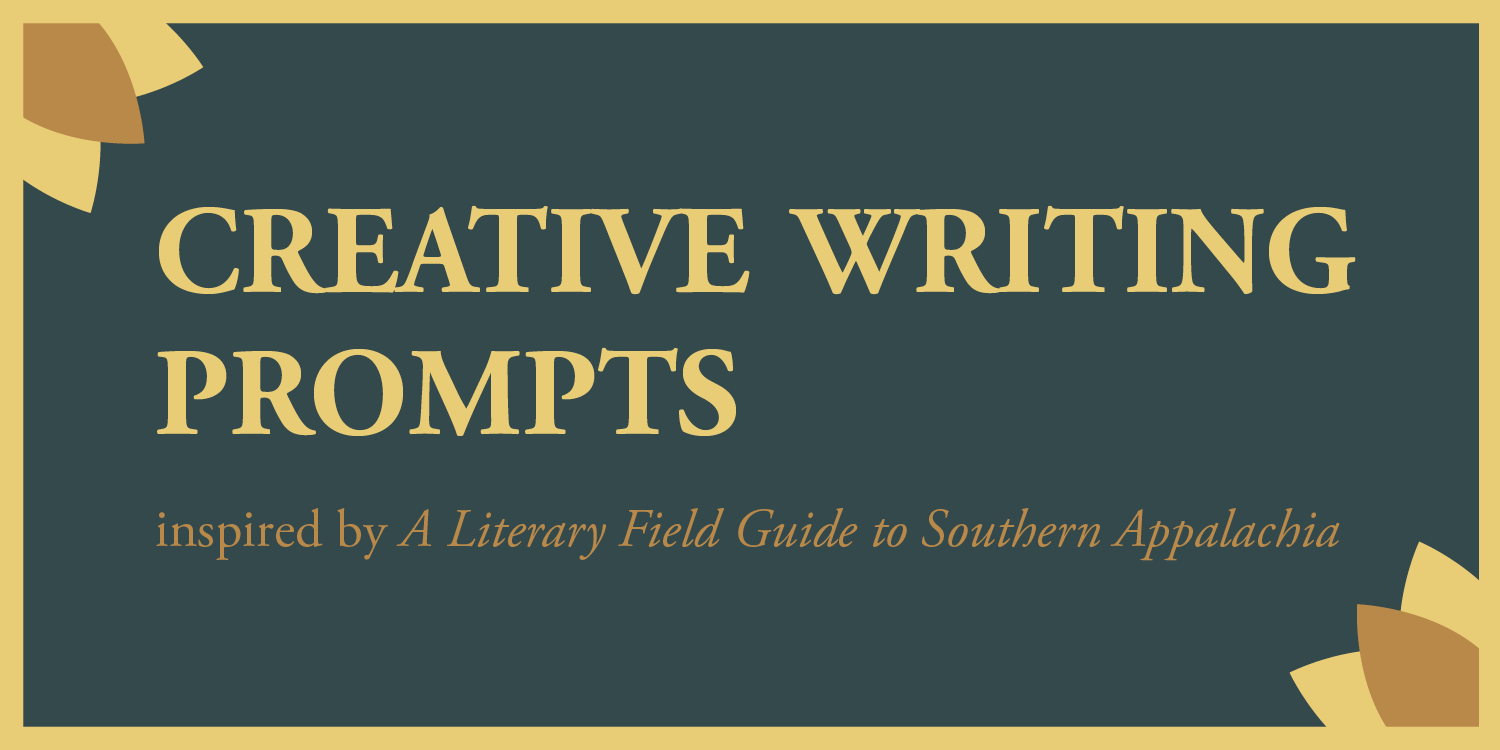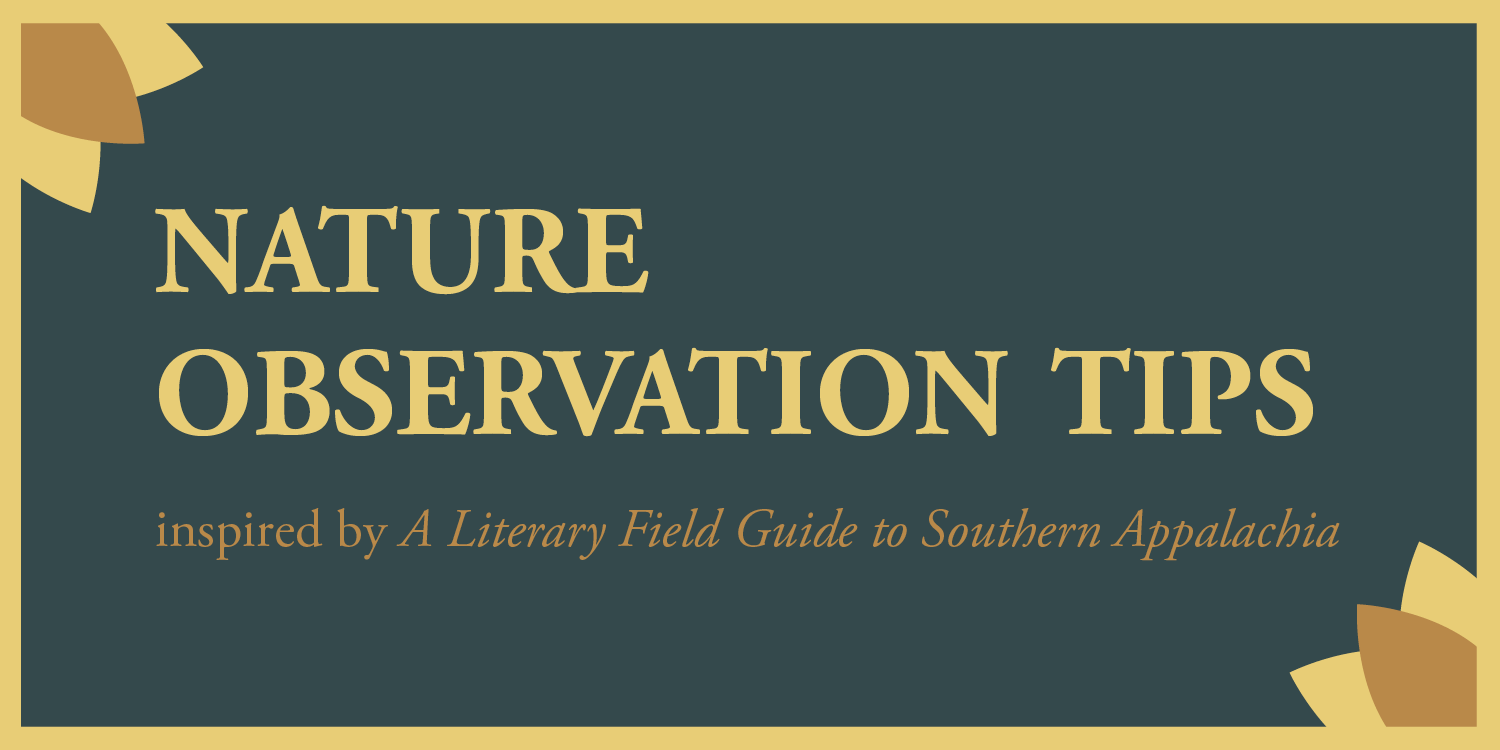|
|
Follow these prompts to draft your own poems. Choose a plant, animal, or other life form as your subject. Then, choose a prompt and read the poem from A Literary Field Guide to Southern Appalachia it references.
Vertical Divider
|
Start by finding a leaf and applying each exercise to it. Later, you can think of ways to adapt these approaches to observing mammals, birds, fish, invertebrates, and fungi you choose from a field guide to your region. Some notes you make will be useful in identifying species. Many of them will provide new vocabulary and specific imagery, and may suggest metaphors to enrich your creative writing.
|
In discussions of nature poems, or ecopoetry, or whatever term may be used to refer to writing that includes representations of nonhuman life forms, questions about the human presence and perspective in the work almost always arise. (Whether a poem calls attention to environmental destruction, romanticizes natures, or interrogates the limitations of the speaker, the touch of its human creator remains.) So, though there are many elements of the finely crafted poems in A Literary Field Guide to Southern Appalachia that merit close study, this vein of inquiry seems like a good starting point. The following notes, which ask about how poets have positioned themselves or their speakers in poems about other species, are intended to invite you and your students to relate to the texts, and then, hopefully, continue and broaden your examinations. The particular discussions from which these materials draw were with Hannah Bruner, Cris Bangert, Rietta Bolus, Calista Malone, and Kerri Green, Auburn University Masters students and fine teachers themselves.
The perspectives of a number of the poems in A Literary Field Guide to Southern Appalachia stay aligned with those of nonhuman life forms. One example is the poem for the American Bullfrog by Ellen Bryant Voigt (pg.111), which describes the life of the character “frog” throughout. Yet, these poems still relate to human conditions. Can you see how Voigt’s frog particularly speaks to women’s experiences, even though no human is mentioned in the text? How about in Irene McKinney’s poem for Ironweed (pg. 41)? Some poems in the anthology are environments shared by the subject species and humans who speak to the reader in first person, such as the poem for the Tulip Poplar by Melissa Range (pg. 51) and the poem for the Northern Long Eared Bat by Rajiv Mohabir (pg. 74). What sort of personality does Range’s “I,” with its strong, idiomatic voice, assert? Mohabir’s question-asking “I” also appears in its poem’s first line, but does it give a different sense of itself? Other poems are in second person, such as the poem for the Blue Crayfish by Bianca Lynne Spriggs (pg. 160) and the poem for the Black Walnut by Lesley Wheeler (pg. 25). The “you” Spriggs’ poem addresses seems mostly to be the crayfish she praises. Yet: Are there ways in which Spriggs may be suggesting likenesses between the behaviors of this invertebrate and certain people she knows? Are there poems in the book in which you feel the “you” addressed is actually the poet herself? Still other poems refer to both “you” and “we,” such as Rita Mae Reese’s poem for the Deer Mouse (pg. 62), or shift from perspective of “I” to “us,” as in the case of Justin Gardiner’s poem for the Carolina Gorge Moss (pg. 33). When choosing these pronouns, what might the speakers be hoping—for themselves, or for all the members our ecosystems? Though Gardiner’s poem speaks of an “us,” it is about a moss few people have ever seen, and a man’s reflections on his solitude. Glenis Redmond’s poem for American Ginseng (pg. 20) is about a plant that has long been sought for its medicinal qualities and speaks about a “we” that seems to be a large community with a shared heritage. Reflect on how human’s historic relationships with other species—whether people have, for instance, found them rare, beautiful, edible, weedy, or useless—may affect the tones of contemporary poets’ who write about them, or the metaphors the species are now used to make. Many of the poems mentioned include questions, as does Molly McCully Brown’s for the Black Carpenter Ant (pg. 158). However, the question that opens the poem is posed without a question mark, and, by the end of the poem, the speaker is no longer describing a “she,” but issuing commands to “you.” What do these shifts accomplish? What are some instances in other poems in which shifts in grammar or other arguably small craft details shift readers’ perspectives in larger ways? |





